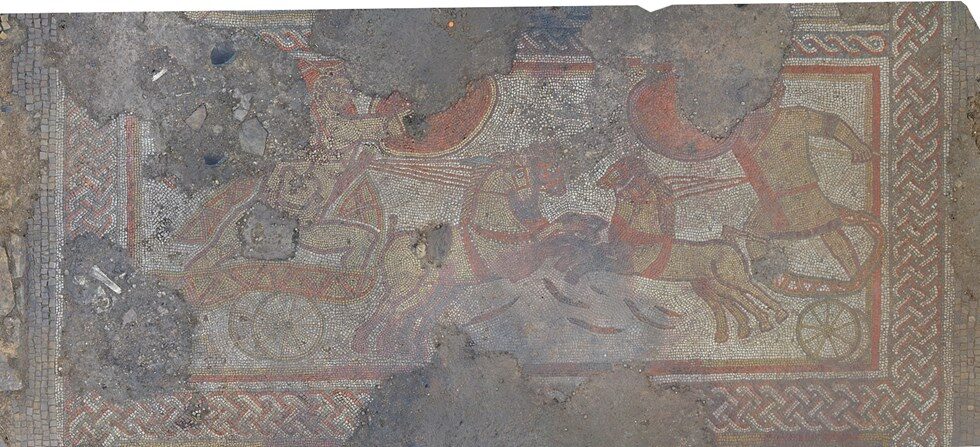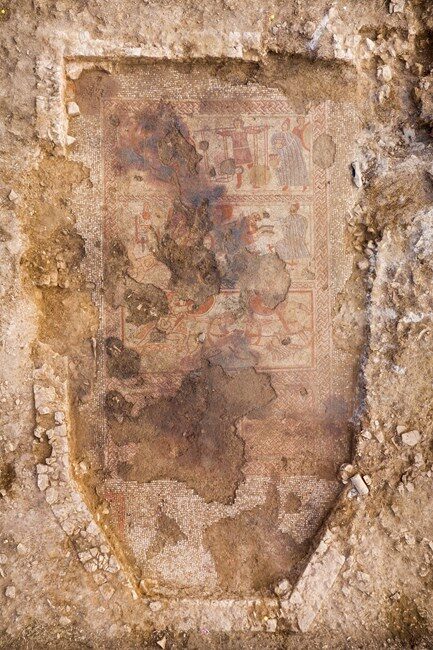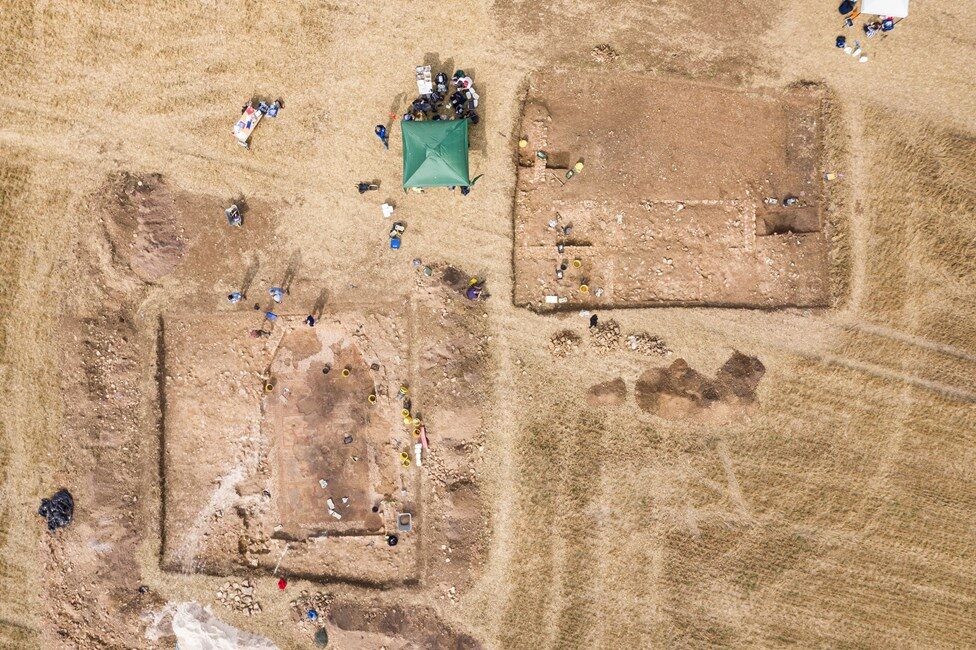
The decision follows archaeological work undertaken by a team from University of Leicester Archaeological Services (ULAS), working in partnership with Historic England and in liaison with Rutland County Council.
The initial discovery of the mosaic was made during the 2020 lockdown by Jim Irvine, son of landowner Brian Naylor, who contacted the archaeological team at Leicestershire County Council, heritage advisors to the local authority.
Given the exceptional nature of this discovery, Historic England was able to secure funding for urgent archaeological investigations of the site by ULAS in August 2020. Further excavation involving staff and students from the University of Leicester's School of Archaeology and Ancient History examined more of the site in September 2021.
A ramble through the fields with the family turned into an incredible discovery.
Finding some unusual pottery amongst the wheat piqued my interest and prompted some further investigative work. Later, looking at the satellite imagery I spotted a very clear crop mark, as if someone had drawn on my computer screen with a piece of chalk! This really was the 'oh wow' moment, and the beginning of the story.
This archaeological discovery has filled most of my spare time over the last year. Between my normal job and this, it's kept me very busy, and has been a fascinating journey. The last year has been a total thrill to have been involved with, and to work with the archaeologists and students at the site, and I can only imagine what will be unearthed next!
Jim Irvine

The artwork forms the floor of what's thought to be a large dining or entertaining area.
Mosaics were used in a variety of private and public buildings across the Roman Empire, and often featured famous figures from history and mythology. However, the Rutland mosaic is unique in the UK in that it features Achilles and his battle with Hector at the conclusion of the Trojan War and is one of only a handful of examples from across Europe.
The room is part of a large villa building occupied in the late Roman period, between the 3rd and 4th century AD.
The villa is also surrounded by a range of other buildings and features revealed by a geophysical survey and archaeological evaluation, including what appear to be aisled barns, circular structures and a possible bath house, all within a series of boundary ditches.
The complex is likely to have been occupied by a wealthy individual, with a knowledge of classical literature.

Other evidence uncovered includes the discovery of human remains within the rubble covering the mosaic. These burials are thought to have been interred after the building was no longer occupied. While their precise age is currently unknown, they are later than the mosaic but placed in a relationship to the villa building, suggesting a very late Roman or early medieval date for the repurposing of this structure. Their discovery gives an insight into how the site may have been used during this relatively poorly understood early post-Roman period of history.
Evidence recovered from the site will be analysed by ULAS at their University of Leicester base, and by specialists from Historic England and across the UK, including David Neal, the foremost expert on mosaic research in the country.
The protection as a scheduled monument recognises the exceptional national importance of this site. It ensures these remains are legally protected and helps combat unauthorised works or unlawful activities such as illegal metal detecting.
To have uncovered such a rare mosaic of this size, as well as a surrounding villa, is remarkable. Discoveries like this are so important in helping us piece together our shared history. By protecting this site we are able to continue learning from it, and look forward to what future excavations may teach us about the people who lived there over 1,500 years ago.The site has been thoroughly examined and recorded as part of the recent investigations and has now been backfilled to protect it for future generations.
Duncan Wilson, Chief Executive Historic England
The villa complex was found within an arable field where the shallow archaeological remains had been disturbed by ploughing and other activities. Historic England is working with the landowner to support the reversion of these fields to a sustainable grassland and pasture use.
These types of agri-environment schemes are an essential part of how we can protect both the historic and natural environments and have contributed around £13 million per year towards the conservation and maintenance of our rural heritage. They help to preserve sites like the Rutland mosaic so that people can continue to enjoy and learn about our fascinating history.
In collaboration with the University of Leicester and other stakeholders, Historic England is planning further excavations on the site for 2022.
Discussions are on-going with Rutland County Council to explore the opportunity for an off-site display and interpretation of the villa complex and its finds. The form and scope of this work will be informed by the proposed future excavations and will be the subject of a future National Lottery Heritage Fund bid.
The site is on private land and not accessible to the public.
The discovery of the Rutland villa and filming as the mosaic is uncovered for the first time in 1,600 years will be featured as part of Digging for Britain when it returns to BBC Two and iPlayer in early 2022.




Reader Comments
To have uncovered such a rare mosaic of this size, as well as a surrounding villa, is remarkable. Discoveries like this are so important in helping us piece together our shared history. By protecting this site we are able to continue learning from it, and look forward to what future excavations may teach us about the people who lived there over 1,500 years ago.
Duncan Wilson, Chief Executive Historic England
Well, he could've saved the UK taxpayer a bunch of money in grants, if he had taken the time to search the font of all knowledge, Wikki in the first place.
[Link]
R.C.